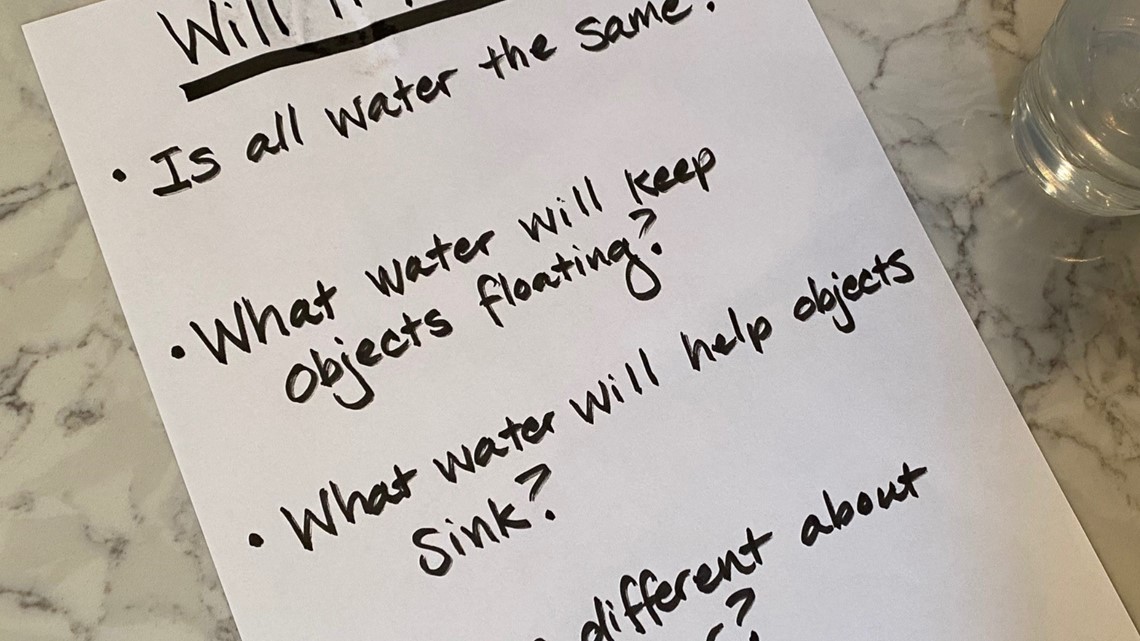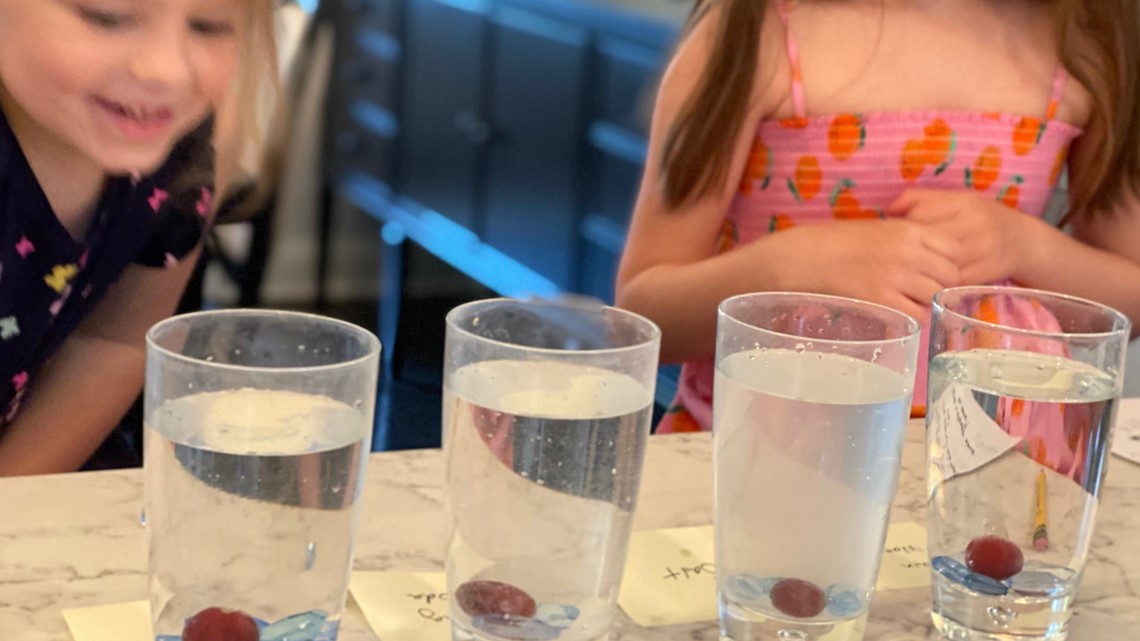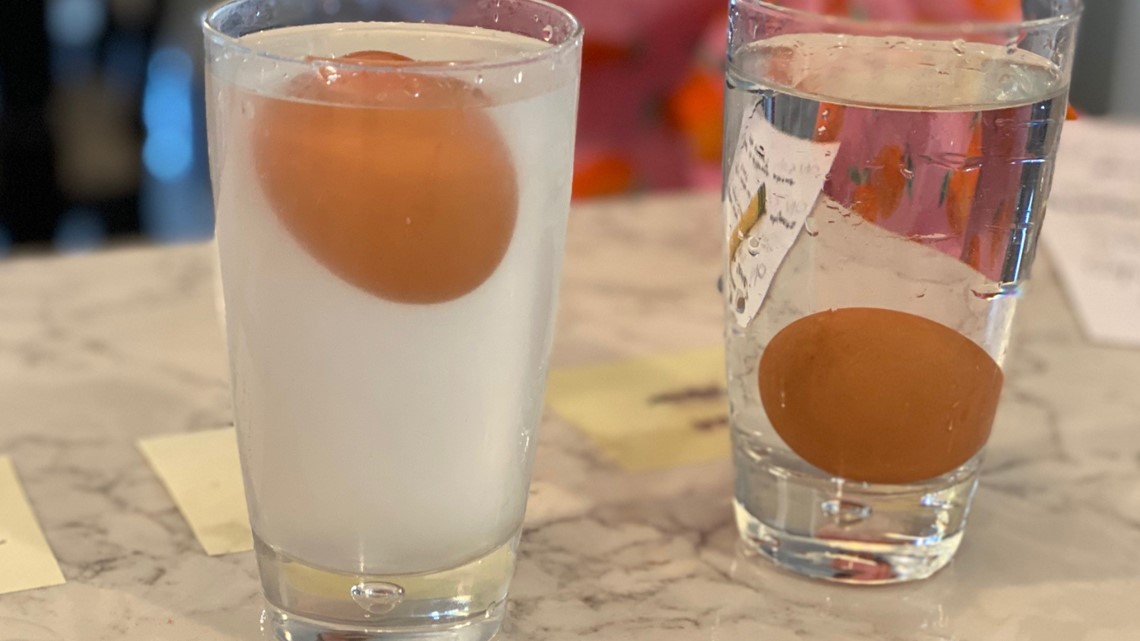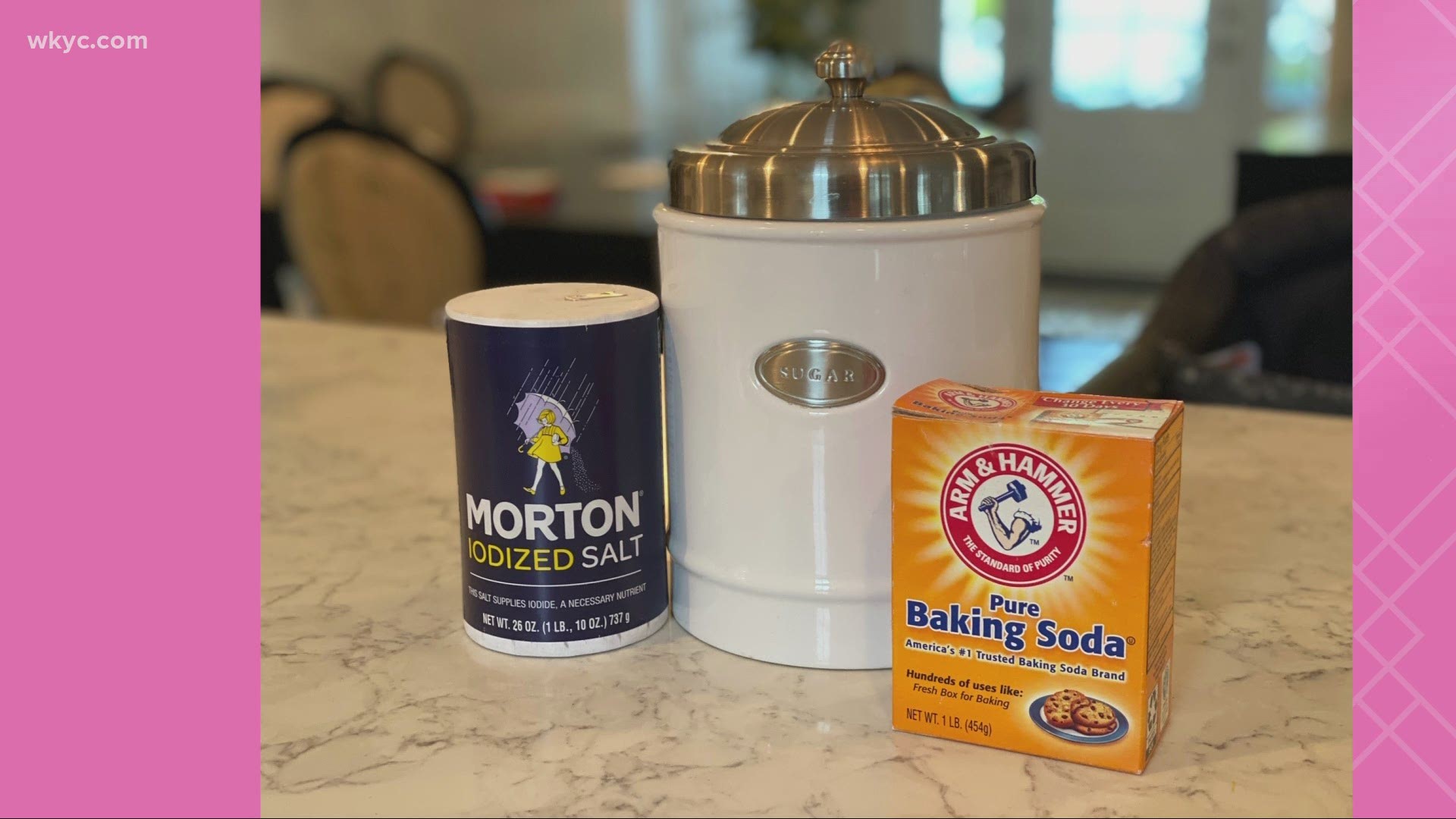CLEVELAND — Maybe it’s the snow. Maybe it’s because it’s May. Maybe it’s the fact that I probably won’t see the ocean any time soon. But in any case, I was thinking about how much I love the smell of saltwater on the shore.
Then I remembered a fun experiment we did in school, showing how saltwater makes things float. We had an extra half hour AND we had salt. So, I did my best to impersonate a science teacher.


To mix things up, I set out four glasses of water. One had sugar, one had baking soda, one had salt and the other was fresh. I dumped three teaspoons of each into warm water (…wait for the end of this story before you do what I do here).
Before the experiment, I had them answer a few questions: Is all water the same? What water will keep objects floating? What water will objects sink in? And what differences do you notice?
Very confidently, we dropped plastic jewel beads into the water expecting one to sink and maybe a couple to float. Alas, they all sank.


Ok, let’s try grapes.
Again, they all sank.
In fact, everything we put in the water all sank.
What was I doing wrong?!!? Thanks to a quick Google search, I learned that I needed three TABLESPOONS of salt to make things float.
I mixed together a new concoction of saltwater in the glass and we tried again.


When the girls put an egg in the fresh water it sank. When they placed an egg in the saltwater, it floated on the top!! Same with the jewels!
They giggled at the fact that there was such a difference in the water. And they giggled at mommy’s failed first attempt. But it was a great lesson in how much salt is needed for buoyancy.
More from Mom Squad

